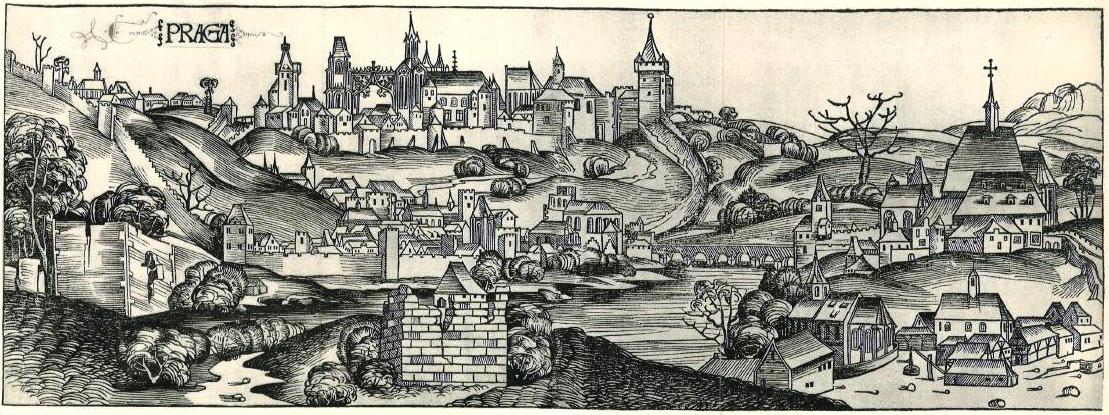
For centuries, the ‘Golden City’ of Prague has stood on the banks of the Vltava at the meeting-point of West and East Europe. The Charles Bridge, one of the continent’s earliest stone-built river crossings, was also one of its most strategic; and from earliest times the city’s architecture reflected its prominence as a centre of trade. The arcades, gated towers and bustling squares of the Old Town bear witness to over a thousand years of thriving commerce.
In the 14th century, the castle, dominated by its fine gothic cathedral, became the favoured seat of the Holy Roman Emperor; not surprisingly it also formed the backdrop of the bloody religious wars of the next three hundred years. From Hussites to Habsburgs, Prague found itself literally at the centre of pan-European strife. Most notable was the Thirty Years’ War, a conflict which resulted in a victory for the Catholic church and the transformation of Prague into the baroque capital of the world.
While the eighteenth century saw a period of relative tolerance, the nineteenth was marked by a fervent desire to reclaim the country from the Austrian Empire. The Czech National Revival was marked architecturally by the development of institutions such as the National Museum and the National Theatre, symbols of the new state that was to emerge in 1918 from the ashes of the First World War. But from 1938 onwards, that hard-won political independence was brutally put down as Czechoslovakia fell victim first to the terrors of Nazi occupation and later to the cold grey hand of communism.
Amidst all the turmoil, Prague has proved to be remarkably resilient; and as the capital of today’s Czech Republic can boast a wealth of urban heritage unrivalled in Europe. From its romanesque and gothic origins, by way of the baroque to the flowering of art nouveau and Czech cubism at the start of the 20th century, the city today is a living testament to the ingenuity and artistry of generations of artists and builders.







